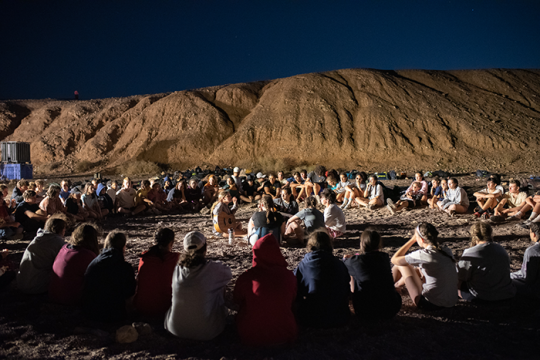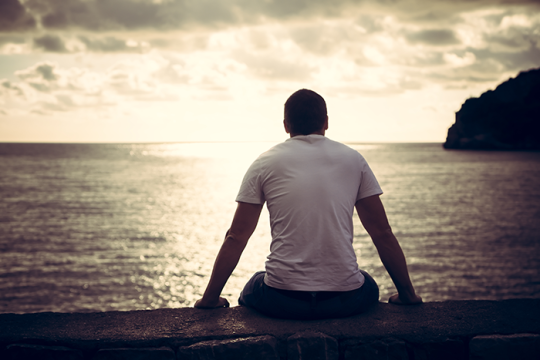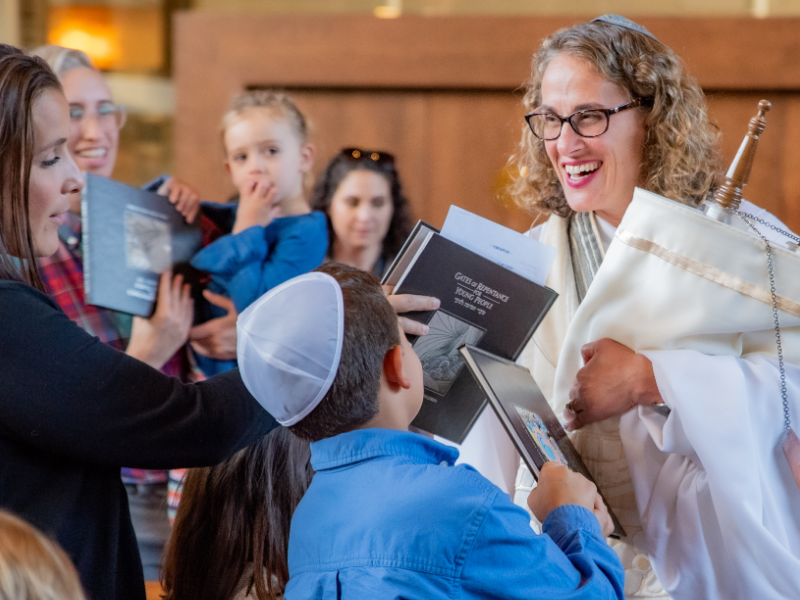
Trauma is the response to a deeply distressing or disturbing event that overwhelms an individual’s ability to cope, causes feelings of helplessness, and diminishes their sense of self and their ability to feel the full range of emotions and experiences (SAMHSA). What is traumatic for one person might not be for someone else; we each experience trauma differently. Many of us in the Jewish community have experienced some sort of trauma or grief due to October 7th, the ongoing conflict, and the global rise in antisemitism. Everyone’s response to these events is different; there is no right or wrong way to respond. Trauma often compounds on trauma, and the never-ending news cycle has made taking a pause and finding joy more difficult. However, Judaism reminds us that we can hold multiple truths at the same time. Elu v’elu, “this and that can be true.”
Finding joy and taking care of ourselves amidst grief is difficult. Fortunately, being part of a Jewish community has amazing protective factors built in. Protective factors are characteristics associated with a lower likelihood of negative outcomes or that reduce the impact of a risk factor. They can even counterbalance a risk factor (National Council for Mental Wellbeing). One protective factor Judaism has built in is ritual, practices we engage in to help process our feelings. Rituals are created based on meaning for an individual, family, or household. For example, there is more than one way to observe Shabbat. It may involve lighting candles, attending synagogue, using your phone less, going on a walk, or simply doing something differently than during the rest of the week.
Another protective factor within Judaism is spirituality, or a connection to something greater. This could be a connection to a higher power, nature, or our breath. Traditions are an additional protective factor. These are the expectations we can lean on: the structure of a worship service or the cycle of reading from the Torah. Sometimes, knowing what’s coming up can be comforting.
One of the greatest strengths of the Jewish community is social connectedness. We work to find what we have in common with others as we build relationships, and a cornerstone of Reform Judaism is the immersive experiences we’re able to provide for youth. We are brought together by tradition for a simcha or to say Kaddish, and some of us may feel the most connected to our Judaism when spending time with other Jewish people at religious school drop off, while volunteering, or while talking about the best desserts at the Friday night oneg.
As a community, not only are we working to take care of ourselves, but also each other. Communal care has different entry points for different people. Here are some tips for building resilience in your community as you’re navigating challenges:
Be Present (Hineni)
- Be a part of your chosen community. Show up and participate in a way that works for you.
- We each bring our whole selves to a community. Give yourself, and others, grace for the way they are able to show up.
- Remember that the community is stronger because of diverse perspectives, lived experiences, and diversity brought by every person - including you!
Listen and Pay Attention (Sh’ma)
- Check in with yourself. What are your body and mind telling you about how to take care of yourself?
- Check in with others. What needs are others communicating through their language, body language, or silence?
- Respond to your own needs and the needs of others with compassion.
Take and Make Space (Anavah)
- Set and model boundaries that work for you, communicate them clearly, and know they may change over time.
- Some situations may be difficult. Sometimes, you may be uncomfortable or not know the answers.
- It’s okay to make mistakes. We are all human! Model self-compassion and taking care of yourself.
Joy (Simcha)
- Find ways to enjoy your community.
- Give yourself, and others, permission to enjoy something that may not be connected to the community.
- Celebrate the big and small moments.
While all of these practices look different for everyone, the most important part of whatever you try is returning to yourself and your values. While the Hebrew anniversary of the October 7th attacks will always fall on Simchat Torah, the secular anniversary will fall on different days of the Jewish calendar every year. This year, October 7th falls on Sukkot, which is also referred to as “Z’man Simchateinu,” the season of our rejoicing (Leviticus 23:40). We are commanded to celebrate, even when things are tough. How are you going to find joy amidst trauma and grief this year? If you’re looking for some more guidance, check out some of these resources to help elevate mental wellness while remembering October 7th:
- Commemorating October 7: Creating Space During the Chaggim (High Holidays) - a conversation about ways we can create space to support community members and professional staff during the chaggim hosted by BeWell and the Blue Dove Foundation.
- Getting Grounded in Israel and Zionism - a self-paced course designed by Rabbi Mike Uram of JFNA to guide you through the facts, nuances, and complexities of Israel and Zionism.
- Practical Guide for Well-Being - a few gentle reminders for practicing self-care.
- The URJ’s Equity Indicator – learn about strategies to ensure your community is inviting to everyone who wants to seek refuge, not just those who fit in easily or are already there.
Related Posts

From Ancient Ruins to Modern Marvels: 10 Must-See Sites in Israel

5 Life-Changing Reasons to Join Yallah! Israel This Summer


